A Poet and Publisher's Obsession with Nudes by Klimt, Schiele, and Picasso
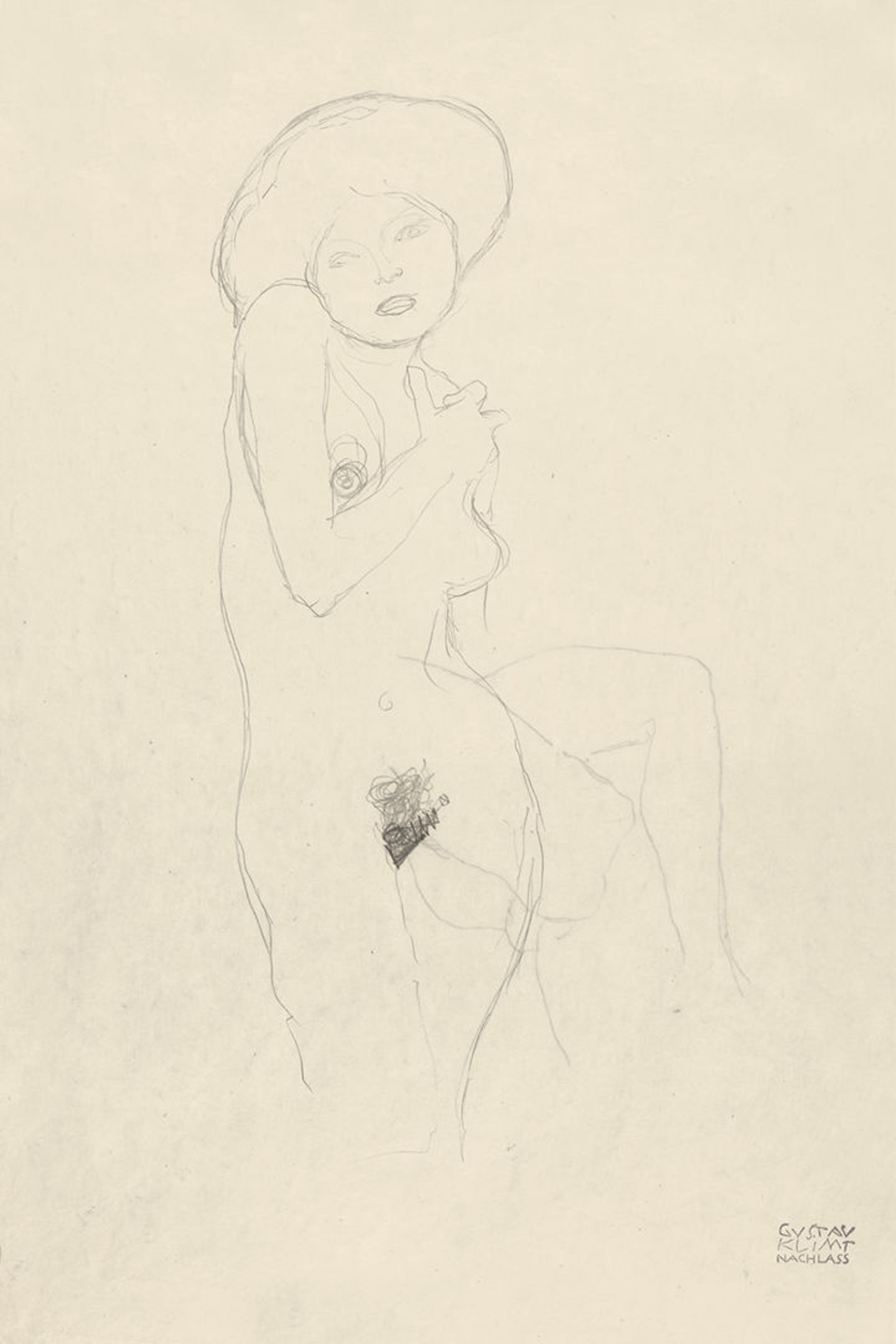
Gustav Klimt (Austrian, 1862–1918). Standing Nude, 1906–1907. Graphite, 22 3/8 x 14 3/4 in. (56.8 x 37.5 cm). The Metropolitan Museum of Art, New York, Bequest of Scofield Thayer, 1982 (1984.433.193a, b)
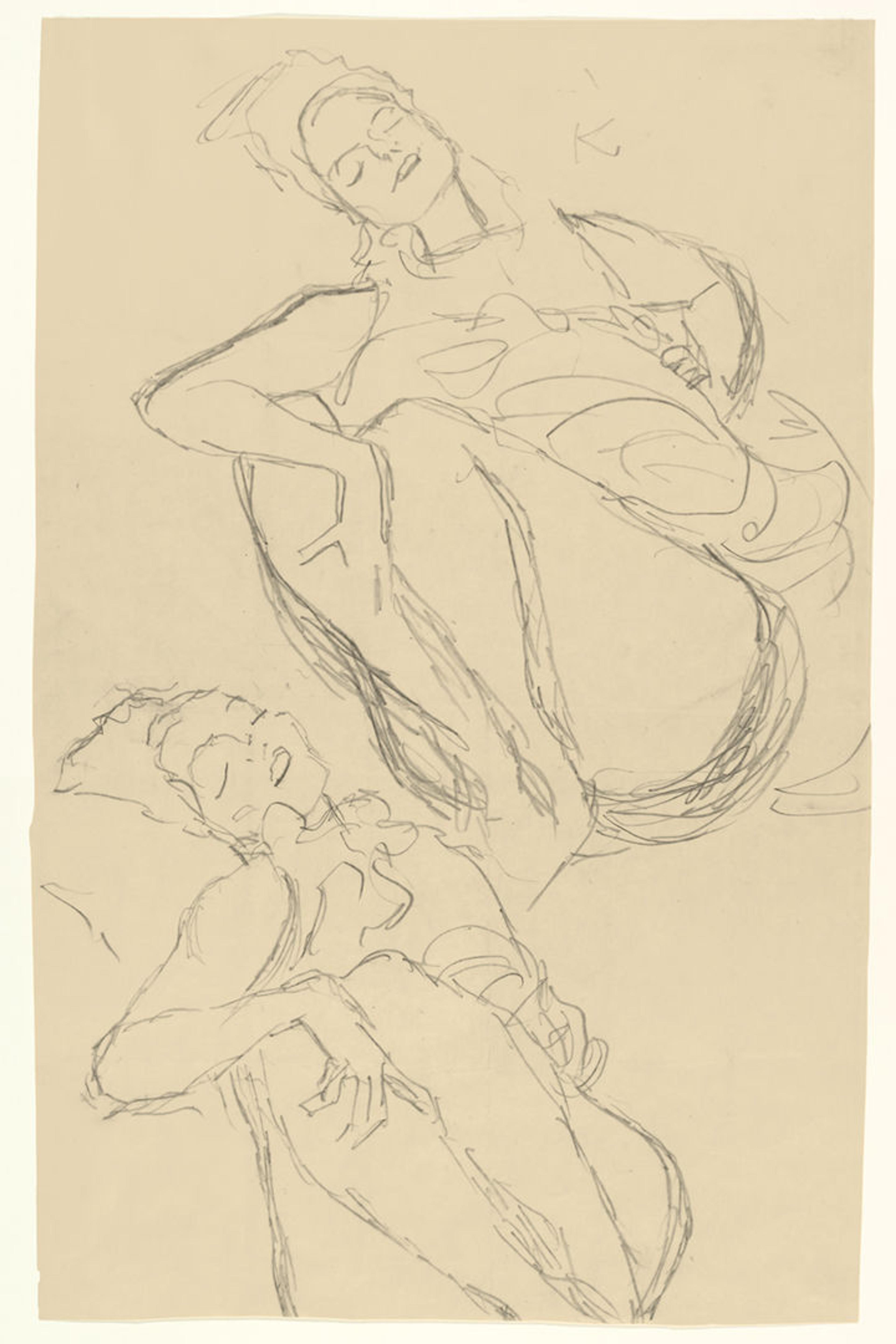
Gustav Klimt (Austrian, 1862–1918). Two Studies for a Crouching Woman, 1914–15. Graphite, 21 1/2 x 13 7/8 in. (54.6 x 35.2 cm). The Metropolitan Museum of Art, New York, Bequest of Scofield Thayer, 1982 (1984.433.195)
The word "obsession" in the title of the new exhibition at The Met Breuer applies to Gustav Klimt, Egon Schiele, Pablo Picasso, and Scofield Thayer. All three of the artists were obsessed with depicting the female nude, although in Picasso's case, the eroticism of his nudes became more pronounced in his later years, perhaps as compensation for his advanced age.
Klimt created more than four thousand known drawings, most devoted to women. He made hundreds of preparatory sketches for a painting. Surrounded in his studio by nude models, he would capture them in a quick sketch if he spotted a pose or a movement that appealed to him. Klimt continually broke taboos; he portrayed real, not conventionally "beautiful" bodies. He defied another convention by showing a life-size pregnant woman in profile in his painting Hope I (1903). His erotic drawings were criticized in the conservative press as "sick," "highly repellent," and "pornographic." In 1904, in preparation for the sensual painting Water Serpents II, (Women Friends), Klimt made some fifty studies with themes of lesbianism and masturbation; after 1912, he continued to treat these subjects in independent images of the female nude and lovemaking couples of both sexes.
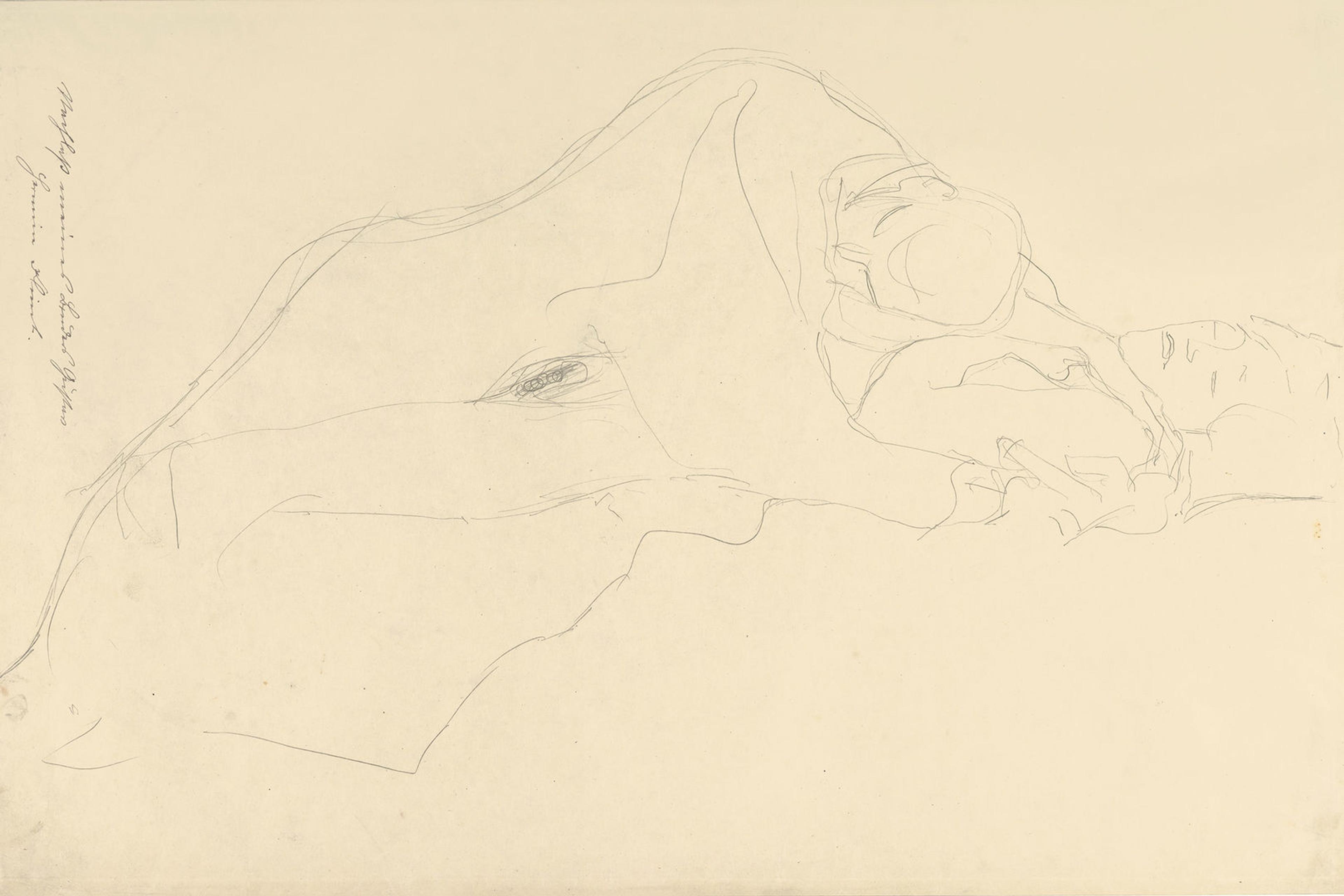
Gustav Klimt (Austrian, 1862–1918). The Lovers, 1913. Graphite, 14 5/8 x 22 1/4 in. (37.1 x 56.5 cm). The Metropolitan Museum of Art, New York, Bequest of Scofield Thayer, 1982 (1984.433.197)
The nudes of Schiele, who looked upon Klimt as a father figure, friend, and beloved master, were more explicitly and provocatively erotic than Klimt's. Among his more than three thousand drawings and watercolors is a large series of self-portraits showing his naked, emaciated body in exhibitionistic poses that reveal the artist's indifference to social conventions. Displaying his groin and genitals, these works mingle morbidity and eroticism, suffering and lust, but they were also notable for their elegant design, and brutal truth to fact. In his insatiable curiosity about the female body, Schiele similarly showed no restraint. In one of his most overtly erotic works, the watercolor Observed in a Dream (1911), he clearly veers toward the clinical.
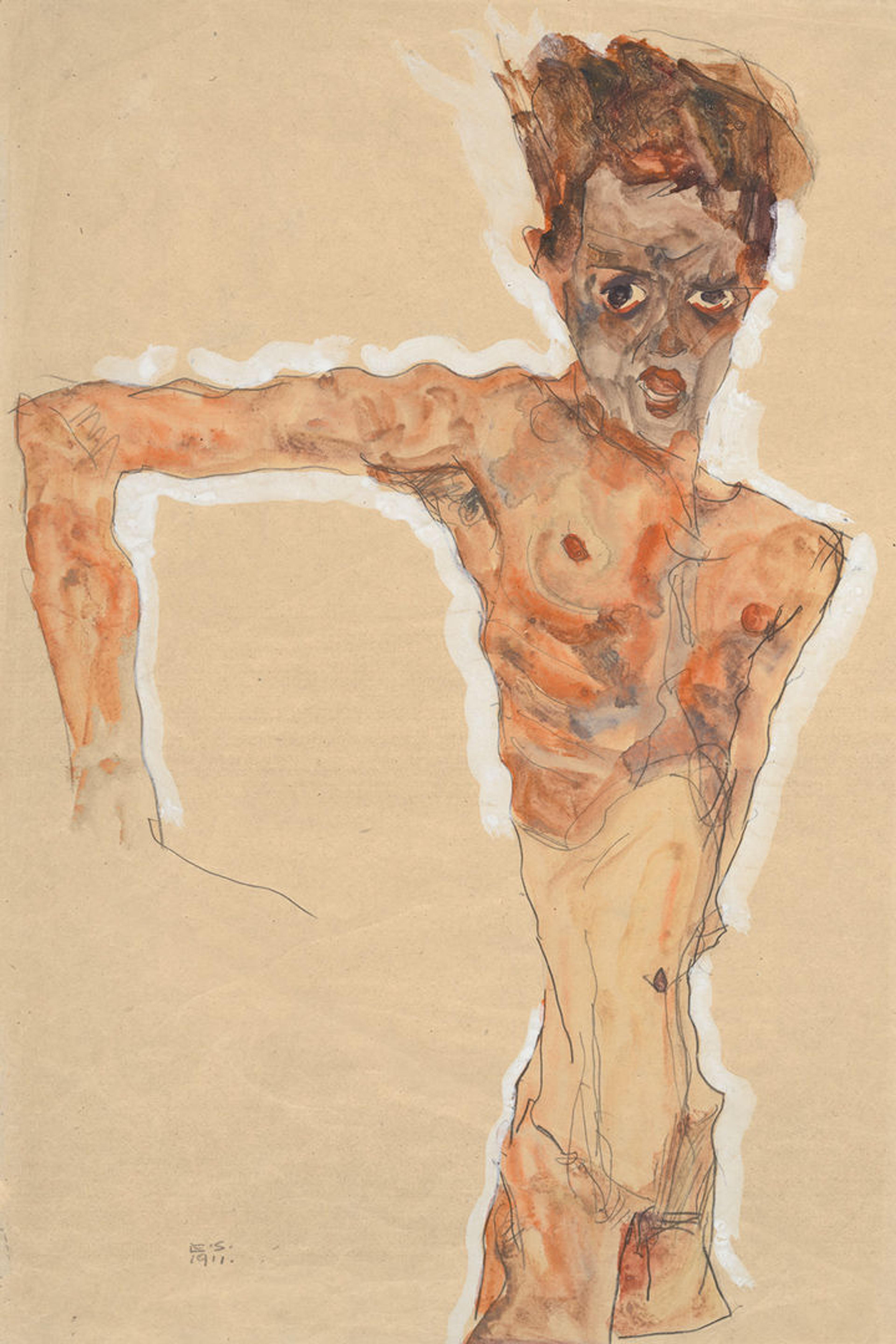
Egon Schiele (Austrian, 1890–1918). Self-Portrait, 1911. Watercolor, gouache, and graphite on paper, 20 1/4 x 13 3/4 in. (51.4 x 34.9 cm). The Metropolitan Museum of Art, New York, Bequest of Scofield Thayer, 1982 (1984.433.298ab)
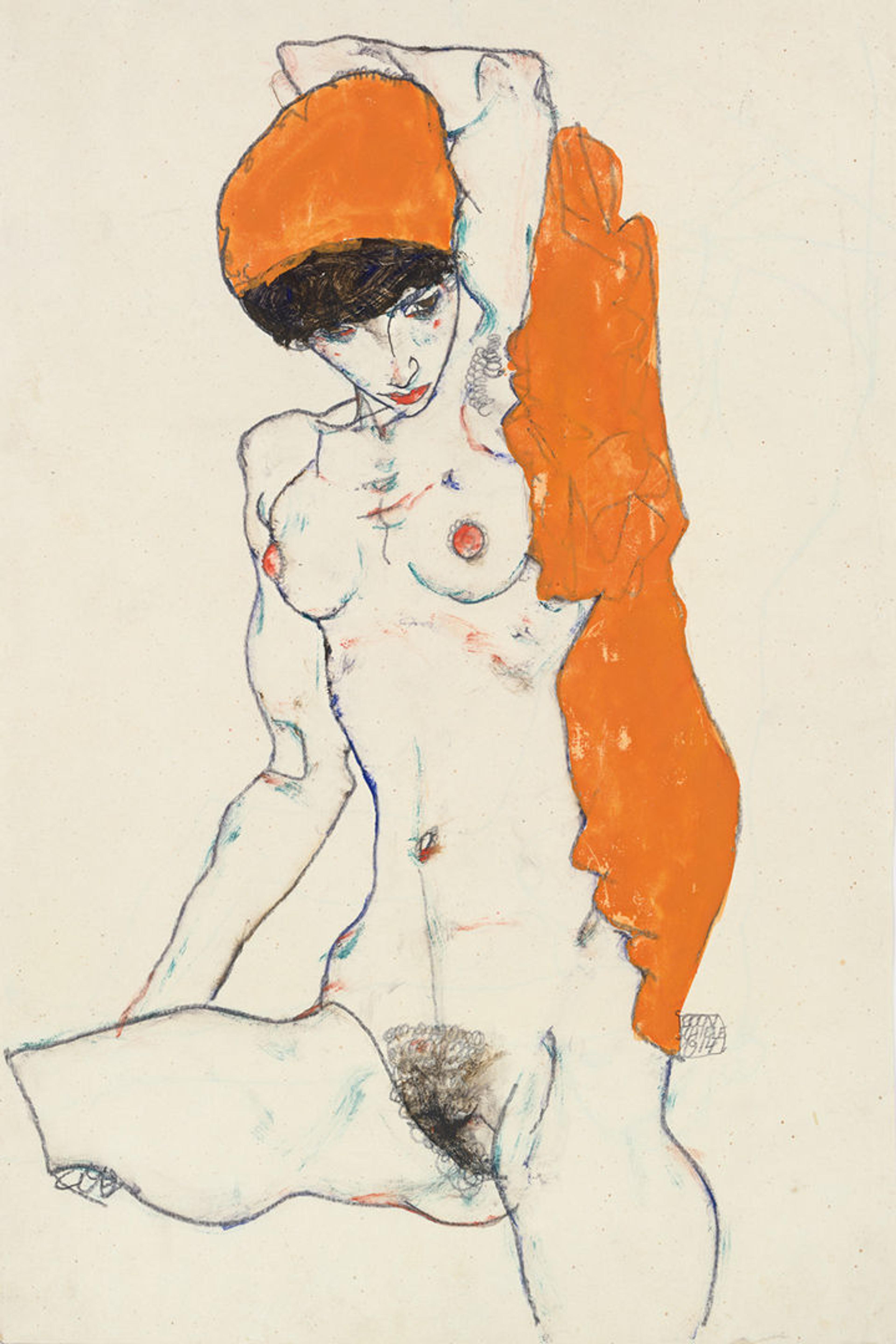
Egon Schiele (Austrian, 1890–1918). Standing Nude with Orange Drapery, 1914. Watercolor, gouache, and graphite on paper, 18 3/8 x 12 in. (46.7 x 30.5 cm). The Metropolitan Museum of Art, New York, Bequest of Scofield Thayer, 1982 (1984.433.315ab)
The accusations against Schiele of kidnapping, statutory rape, and offenses against public morality are still repeated today in a sensationalist and distorted fashion. Although the artist spent three weeks in prison while awaiting trial, he was ultimately acquitted of the original charges. He was found guilty, however, of permitting children to roam freely through his studio, where they had seen a drawing of a nude. For "corrupting the morals of minors," the offensive drawing was burned by the judge at the hearing. The experience was shattering to the artist, but his creativity did not suffer.
If Klimt, Schiele, and Picasso were driven to create art, Scofield Thayer was compulsive in buying it. It is probably no accident that the collector acquired Schiele's Observed in a Dream, as well as Picasso's equally notorious Erotic Scene (1902), which may recapture an episode of the adolescent artist's sexual initiation in a Barcelona brothel. Writing from Europe in dutiful letters to his mother in faraway Worcester, Massachusetts, Thayer recounted having acquired works by Klimt and Schiele that were "very charming indeed," and added in a later letter that these "less expensive works" were "for my private pleasure." Mrs. Thayer could not have guessed that she would have been highly shocked by these "charming" works had she seen them, which she never did. Nor would the American public because none of them would be featured in the pages of the Dial, Thayer's literary magazine.

Anton Joseph Trcka (Austrian, 1893–1940). Egon Schiele, 1914. Gelatin silver print, 8 7/8 x 6 in. (22.6 x 15.3 cm). The Metropolitan Museum of Art, New York, Gilman Collection, Purchase, Ann Tenenbaum and Thomas H. Lee Gift, 2005 (2005.100.579)

E. E. Cummings (American, 1894–1962). Scofield Thayer, ca. 1925. Graphite on paper, 8 3/8 x 5 3/8 in. (21.3 x 13.7 cm). The Metropolitan Museum of Art, New York, Bequest of Scofield Thayer, 1982 (1984.433.94)
Photographs and descriptions of Thayer attest that he was a refined and extremely handsome man. An aesthete of superior intelligence, a brilliant abstract thinker, and an individualist with egocentric ambitions, he was also an extremely complex and conflicted personality who found it hard to fit into conventional society. His marriage was brief, faltering when its novelty wore off and the challenges of seduction waned.
While in Vienna in the early 1920s, Thayer embraced the liberating social and artistic climate of the city. He had gone there not only to undergo psychoanalysis with Sigmund Freud but also to scout writers and artists for the Dial. Both Klimt and Schiele had been dead for only three years when Thayer began acquiring their work in 1921. Unlike Picasso, whose work had been shown in New York in 1911 and 1913, Klimt and Schiele were unknown in America. Thayer obviously did not buy the works of Schiele and Klimt only because they were "less expensive"; he must have responded viscerally to their eroticism.
According to James Dempsey, Thayer's biographer and coauthor of the exhibition catalogue, Thayer's personal writings reveal that he was obsessed with sex. In his private life, he was attracted to young, still-perfect bodies of both sexes. Parallels can be drawn to the aging Gustav von Aschenbach, who becomes infatuated with the blond, elfin Polish boy Tadzio in Thomas Mann's Death in Venice. In the fourteen-year-old's beautiful body, Aschenbach sees the perfection of form. He never consummates his passion beyond the act of looking, unlike Thayer, who apparently once tried to seduce a teenage boy. When he approached his final breakdown in the late twenties, he showed interest in girls.
Thayer also courted controversies in his professional life. As the heir to a fortune that enabled him to fund the Dial (together with co-owner James Sibley Watson, Jr.), he could afford to challenge its readers without fears of censorship. He introduced avant-garde works by writers and poets, such as T. S. Eliot, E. E. Cummings, Ezra Pound, James Joyce, D. H. Lawrence, Marcel Proust, and Arthur Schnitzler; criticism by Eliot, Edmund Wilson, Henry McBride, and Kenneth Burke; and philosophical essays by Bertrand Russell, Romain Rolland, and John Dewey. In a possibly poignant gesture, he also published the first English-language translation of Death in Venice, in the March 1924 issue of the Dial.
Notes
This essay was adapted from the preface to Obsession: Nudes by Klimt, Schiele, and Picasso from the Scofield Thayer Collection (The Metropolitan Museum of Art, 2018), a catalogue published in conjunction with the exhibition of the same name on view at The Met Breuer through October 7, 2018.
This article was updated on July 9, 2018, to correct a misspelling of the word "statutory."
Related Content
Obsession: Nudes by Klimt, Schiele, and Picasso from the Scofield Thayer Collection is on view at The Met Breuer through October 7, 2018.
Learn more about Gustav Klimt, Egon Schiele, Pablo Picasso, and Scofield Thayer by viewing the exhibition galleries online.
The exhibition catalogue, featuring essays by James Dempsey and Sabine Rewald, is available for purchase at The Met Store.
Sabine Rewald
Sabine Rewald is the Jacques and Natasha Gelman Curator in the Department of Modern and Contemporary Art.